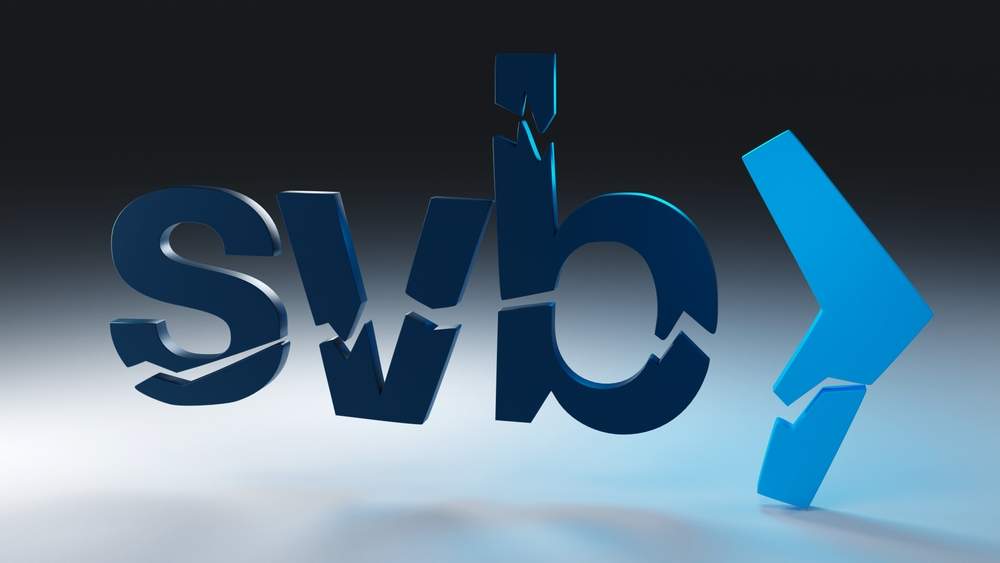Amber Lancaster and I even discussed it in our Market Insights video. (If you’re curious how to get access to our relaunched duo video, click here.)
I’ve been keeping an eye on it, mostly because it reminds me of my old days back on Wall Street…
You might not know this about me, but I first got started in finance by working in the banking industry. I did fixed-income trading first at Salomon Brothers, and later at Citigroup.
I’m telling you this to give you a little bit of context for where I was in 2008.
I’m sure most of you remember the year that kicked off the financial crisis.
Back then, I was managing a hedge fund that benefited from the collapse of big banks.
I had a front-row seat to everything that happened.
I witnessed the systemic collapse of all these different finance companies and mortgage bond insurers.
Now, looking at Silicon Valley Bank (SVB), it’s useful to have this experience to draw back on.
Because today, I’m here to tell you one thing…
The contagion we saw in 2008 is not going to happen again with the collapse of Silicon Valley Bank.
And it all boils down to one reason: Silicon Valley Bank is not too big to fail.
In today’s video, I lay out how SVB got into this trouble in the first place, how it compares to what happened in 2008, and what this means for interest rates.
I also reveal:
- SVB’s BIGGEST issue. (2:25)
- How this created the world’s first digital bank run. (5:43)
- The game for the stock market for the rest of the year. (9:47)
If you’d like to watch my entire video, just click on the play button below.
That’s it for my take personal take on SVB, but, as you know, here at Banyan, we value having conversations — even if we don’t agree sometimes.
So write us at BanyanEdge@BanyanHill.com, and let us know what you think.
Is Silicon Valley Bank the herald of the next financial crisis? Or is it just an overleveraged institution looking for a handout?
I look forward to reading your responses!
Regards, Ian KingEditor, Strategic Fortunes
Ian KingEditor, Strategic Fortunes
Read Strategic Fortunes reviews or find more information here.
How the “Non-Bailout” Bailout Works
The shutdown of Silicon Valley Bank (SVB) is the biggest news of this year. It’s the second largest bank failure in U.S. history, and a mainstay of the tech economy for the past 40 years. But you already know that.
I’m more interested in the “not a bailout” bailout.
SVB’s death was caused by a mismatch. It had long-term assets, but its liabilities — customer deposits — were short-term. Those long-term assets were primarily mortgage and Treasury bonds, which declined in value because of soaring bond yields.
It was just a matter of time before the Fed’s aggressive rate hiking “broke” something.
After two decades of ultra-loose monetary policy, no one running a bank today has any experience with a Fed this hawkish or a yield curve this inverted.
So, SVB essentially got caught on the wrong side of an interest rate trade it didn’t realize it was making.
And here is where the Fed stepped in.
His policy mistakes during the pandemic notwithstanding, Fed Chairman Jerome Powell is not an idiot. Neither is Treasury Secretary Janet Yellen. Both were smart enough to know that we can’t have a repeat of the 2008 meltdown (and subsequent bailouts).
15 years later, we are still dealing with the aftermath of the decisions made back then. The rise of anti-establishment populism on both the left and right has been ripping our country apart for years.
This stems, in no small part, from the anger, frustration and general sense of unfairness that Americans felt after watching bankers in fancy suits blow up the world. Then, they got bailed out by the government … without even losing their jobs.
If we had a repeat of that, there likely would literally be blood in the streets.
So how is this time different?
Interestingly, the executives of the failed banks have been removed. The shareholders have been largely wiped out.
That’s a good start. The depositors are effectively being bailed out well above and beyond the $250,000 FDIC max. And yes, that is a “bailout” of sorts for wealthy clients and companies.
But the thinking here is that, at least, we’re bailout out the innocent victims as opposed to the irresponsible bankers that screwed it all up.
But here’s the most interesting part.
Taking a page out of their 2008 playbook, the Fed created the Bank Term Funding Program (BTFP), which allows banks to borrow from the Fed using their battered long-term bonds as collateral.
I’ll explain it in plain English: Let’s say the bank bought 30-year Treasuries that have declined by 25% in value due to interest rate moves. Now they’re worth $750 instead of their face value of $1,000. The Fed will lend them the full $1,000, taking the $750 bond as collateral.
Now, does this “fix” the problem?
No, not completely. Banks that screwed up are still not going to be in a great position to lend and grow their businesses any time soon. But it should prevent a repeat of 2008, where the banks started to fall like dominoes.
I believe we’ve escaped a 2008 meltdown scenario. That’s the good news. But that doesn’t mean this bear market is over or that we’re out of recession danger. Just today, Meta, Facebook’s parent company, announced 10,000 more layoffs.
Staying nimble here is the key. And like Adam O’Dell mentioned in our podcast yesterday, his Stock Power Rating System was able to pinpoint the weaknesses in the market (and in bank stocks) before SVB collapsed.
His system has also predicted the next “Big Short” in overvalued stocks. Just click here to find out more!
Regards, Charles SizemoreChief Editor, The Banyan Edge
Charles SizemoreChief Editor, The Banyan Edge









